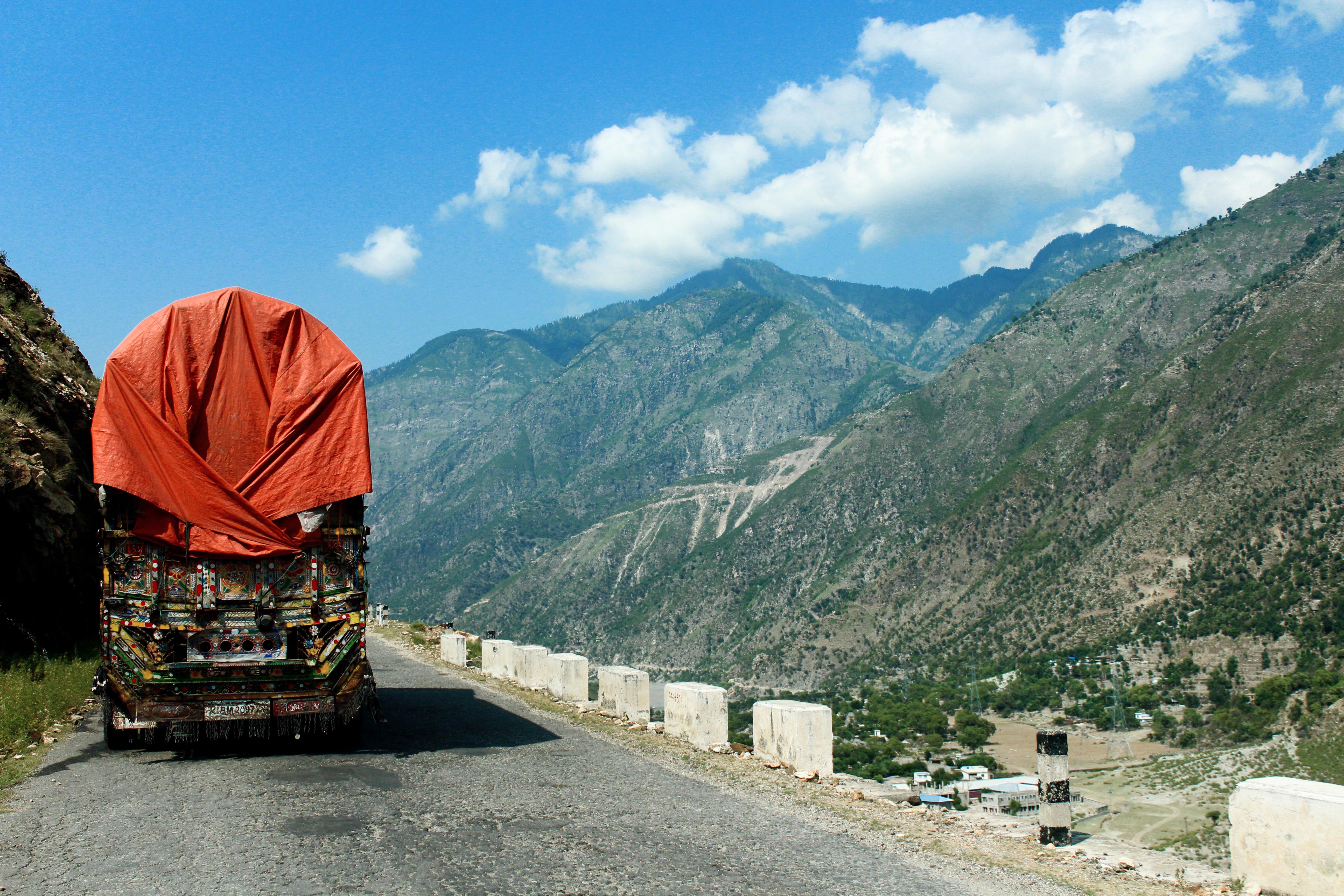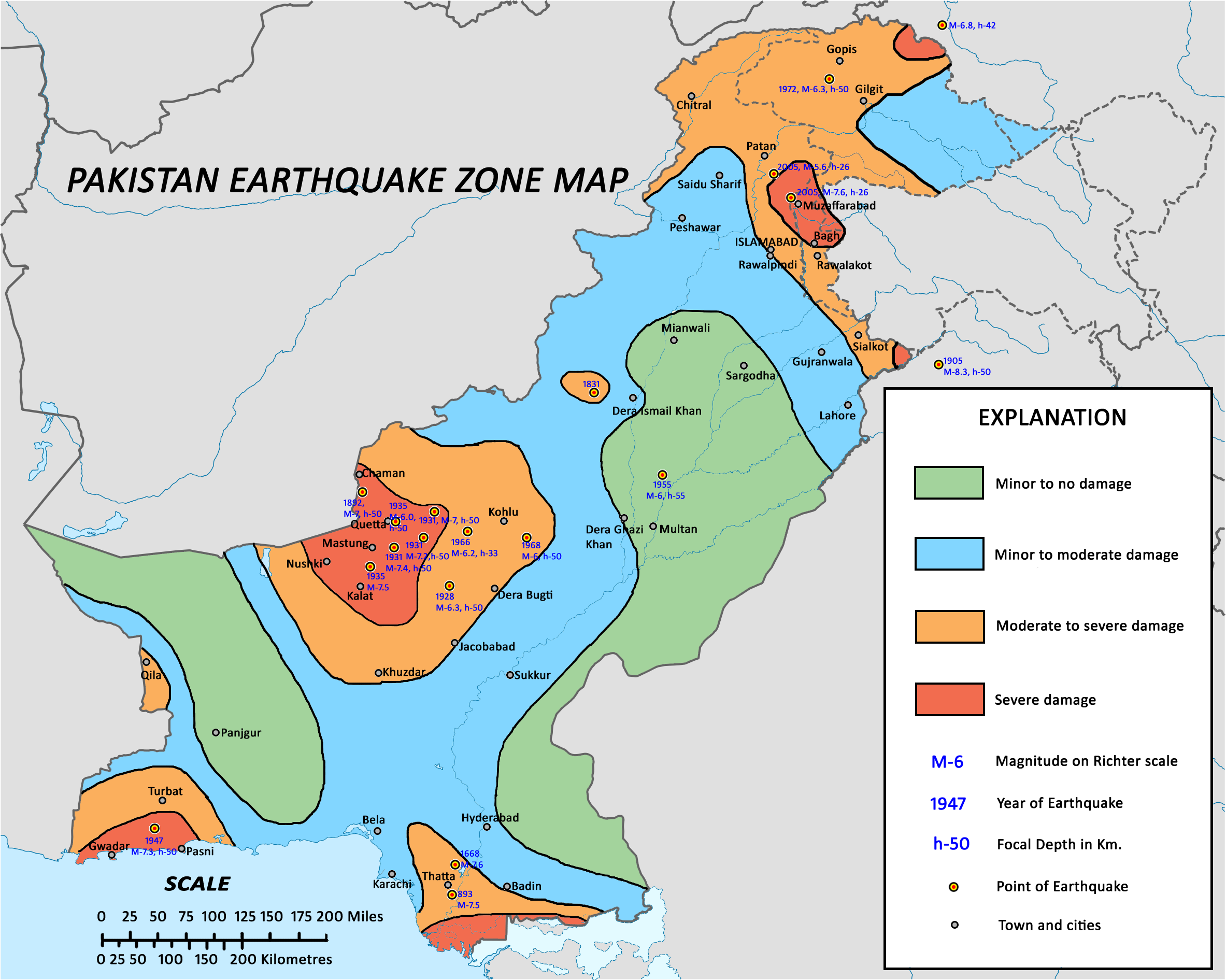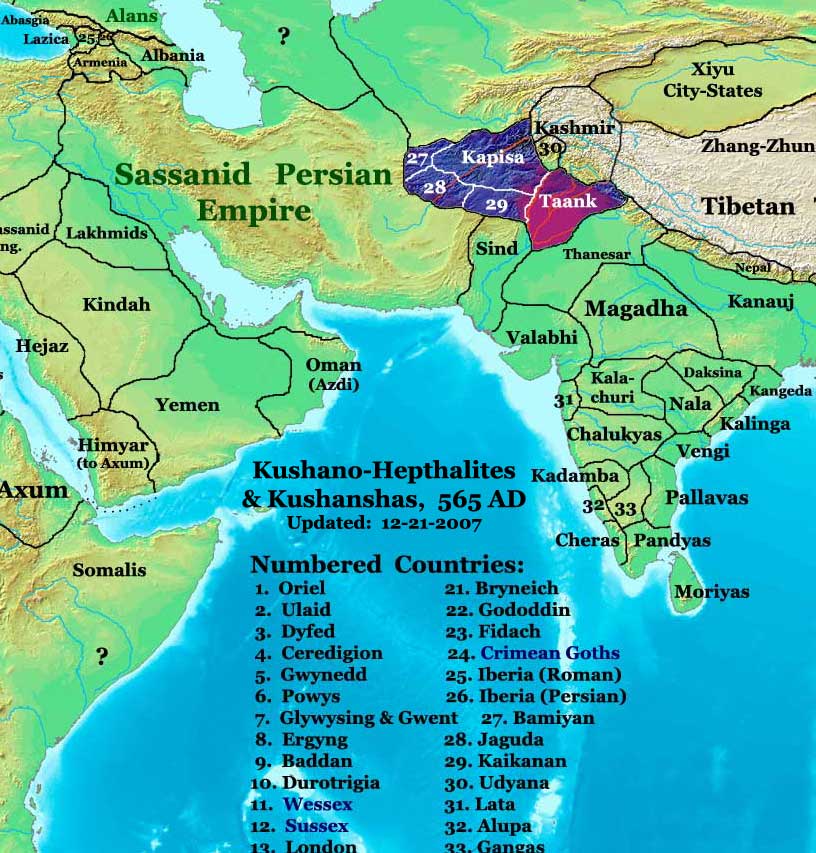|
List Of Faults In Pakistan
This is a list of faults in Pakistan. Geology Chaman Fault The ''Chaman Fault'' is a major, active geological fault in Pakistan and Afghanistan that runs for over 850 km."USGS Unveils How Earthquakes Pose Risks to Afghanistan" News Release, 30 May 2007, United States Geological Survey , it is actually a system of related geologic faults that separates the Eurasian Plate from the Indo-Australian Plate. It is a terrestrial, primarily [...More Info...] [...Related Items...] OR: [Wikipedia] [Google] [Baidu] |
Fault (geology)
In geology, a fault is a Fracture (geology), planar fracture or discontinuity in a volume of Rock (geology), rock across which there has been significant displacement as a result of rock-mass movements. Large faults within Earth's crust (geology), crust result from the action of Plate tectonics, plate tectonic forces, with the largest forming the boundaries between the plates, such as the megathrust faults of subduction, subduction zones or transform faults. Energy release associated with rapid movement on active faults is the cause of most earthquakes. Faults may also displace slowly, by aseismic creep. A ''fault plane'' is the Plane (geometry), plane that represents the fracture surface of a fault. A ''fault trace'' or ''fault line'' is a place where the fault can be seen or mapped on the surface. A fault trace is also the line commonly plotted on geological maps to represent a fault. A ''fault zone'' is a cluster of parallel faults. However, the term is also used for the zone ... [...More Info...] [...Related Items...] OR: [Wikipedia] [Google] [Baidu] |
Kohistan District, Pakistan
Kohistan District, also known as Indus Kohistan ( Kohistani: ) and Hazara Kohistan, was a district within the Hazara Division of Khyber Pakhtunkhwa, Pakistan. Consisting of eastern portion of the larger Kohistan region, it was bifurcated into two districts in 2014: Upper Kohistan and Lower Kohistan. In 2017, the Lower Kohistan District was further bifurcated and a district Kolai-Palas was established. It has an area of and a population of 472,570 according to the 1998 Census. Geographically, Kohistan stretched from Gilgit-Baltistan in the north to the Mansehra District in the east to the Battagram District and Shangla and Swat districts in the west. History The Kohistan region is mainly inhibited by the speakers of Dardic languages, commonly known as Kohistani people. Until 1st May 1934 Indus Kohistan was included in the Gilgit Agency, when its control was transferred to the North Western Frontier Province. However, its area continued to be counted in the total a ... [...More Info...] [...Related Items...] OR: [Wikipedia] [Google] [Baidu] |
Geology Of Pakistan
The geology of Pakistan encompasses the varied landscapes that make up the land constituting modern-day Pakistan, which are a blend of its geological history, and its climate over the past few million years. The Geological Survey of Pakistan is the premier agency responsible for studying the country's geology. Tectonic zone Pakistan geologically overlaps both with the Indian and the Eurasian tectonic plates where its Sindh and Punjab provinces lie on the Indian plate while western parts of Balochistan and parts of Khyber-Pakhtunkhwa lie on the Eurasian plate which mainly comprises the Iranian plateau although reaching on the Indian plate, albeit bordering the Arabian plate on the extreme southwest and the Hindu Kush from the Afghan-Pakistan border. Azad Kashmir lie's on the Western Himalaya's while Northern Areas lie on the almost northern end of South Asia most of the region is part of the Greater Himalayan Mountain Region much more close to Central Asia and hence are ... [...More Info...] [...Related Items...] OR: [Wikipedia] [Google] [Baidu] |
List Of Earthquakes In Pakistan
Pakistan is one of the most seismically active countries in the world, being crossed by several major faults. As a result, earthquakes in Pakistan occur often and are destructive. Geology Pakistan geologically overlaps both the Eurasian plate, Eurasian and Indian plate, Indian plate tectonics, tectonic plates. Balochistan, Pakistan, Balochistan, the Federally Administered Tribal Areas, Khyber Pakhtunkhwa and Gilgit-Baltistan provinces lie on the southern edge of the Eurasian plate on the Iranian Plateau. Sindh, Punjab, Pakistan, Punjab and Azad Kashmir, Azad Jammu & Kashmir provinces lie on the north-western edge of the Indian plate in South Asia. Hence this region is prone to violent earthquakes, as the two tectonic plates collide. Earthquakes See also *List of faults in Pakistan *National Disaster Management Authority (Pakistan), National Disaster Management Authority *Earthquake Reconstruction & Rehabilitation Authority References Sources * * Further reading * ... [...More Info...] [...Related Items...] OR: [Wikipedia] [Google] [Baidu] |
Rawat Fault
The Rawat Fault is a Fault (geology), geological fault in Pakistan. It runs through Punjab, Pakistan, Punjab, from Rawat, Murree, Rawat, Islamabad to Kashmir. The collision of the Eurasian plate and the Indian plate created the Himalaya Salt Range and the Rawat Fault, a line of boulders that the English deputy commissioner of Rawalpindi referred to in the ''Rawalpindi Gazetteer'' of 1893–94 as "dogs' teeth". External links {{Commons category Oregonstate.edu: Rawat Fault and the Salt RangeUpesh.edu.pk: Geological Bulletin – "Rawat Fault line" Geology of Pakistan Seismic faults of Asia Geography of Islamabad ... [...More Info...] [...Related Items...] OR: [Wikipedia] [Google] [Baidu] |
Main Frontal Thrust
The Main Frontal Thrust (MFT), also known as the Himalayan Frontal Thrust (HFT), is a geological fault in the Himalayas that defines the boundary between the Himalayan foothills and Indo-Gangetic Plain. The fault is well expressed on the surface thus could be seen via satellite imagery. It is the youngest and southernmost thrust structure in the Himalaya deformation front. It is a splay branch of the Main Himalayan Thrust (MHT) as the root décollement. Background It runs parallel to other major splays of the MHT, the Main Boundary Thrust (MBT) and Main Central Thrust (MCT). The Sunda Megathrust, which extends from the Banda Islands to Myanmar, is joined with the MFT. The fault strikes in a northwest-southeast direction and dips at an angle of 20° to 30° in the north. The Main Boundary Thrust is another major thrust fault in the Himalaya orogenic wedge that was active in the Cenozoic. It runs parallel to the MFT with a spacing distance of about 20 km. Shortening ... [...More Info...] [...Related Items...] OR: [Wikipedia] [Google] [Baidu] |
Volcano
A volcano is commonly defined as a vent or fissure in the crust of a planetary-mass object, such as Earth, that allows hot lava, volcanic ash, and gases to escape from a magma chamber below the surface. On Earth, volcanoes are most often found where tectonic plates are diverging or converging, and because most of Earth's plate boundaries are underwater, most volcanoes are found underwater. For example, a mid-ocean ridge, such as the Mid-Atlantic Ridge, has volcanoes caused by divergent tectonic plates whereas the Pacific Ring of Fire has volcanoes caused by convergent tectonic plates. Volcanoes resulting from divergent tectonic activity are usually non-explosive whereas those resulting from convergent tectonic activity cause violent eruptions."Mid-ocean ridge tectonics, volcanism and geomorphology." Geology 26, no. 455 (2001): 458. https://macdonald.faculty.geol.ucsb.edu/papers/Macdonald%20Mid-Ocean%20Ridge%20Tectonics.pdf Volcanoes can also form where there is str ... [...More Info...] [...Related Items...] OR: [Wikipedia] [Google] [Baidu] |
Skardu
Skardu (, Tibetan script: སྐར་མདོ, ) is a city located in Pakistan-administered Gilgit-Baltistan in the disputed Kashmir region. The application of the term "administered" to the various regions of Kashmir and a mention of the Kashmir dispute is supported by the WP:TERTIARY, tertiary sources (a) through (d), reflecting WP:DUE, due weight in the coverage. Although "controlled" and "held" are also applied neutrally to the names of the disputants or to the regions administered by them, as evidenced in sources (f) through (h) below, "held" is also considered politicized usage, as is the term "occupied," (see (i) below). (a) (subscription required) Quote: "Kashmir, region of the northwestern Indian subcontinent ... has been the subject of dispute between India and Pakistan since the partition of the Indian subcontinent in 1947. The northern and western portions are administered by Pakistan and comprise three areas: Azad Kashmir, Gilgit, and Baltistan, the last two bei ... [...More Info...] [...Related Items...] OR: [Wikipedia] [Google] [Baidu] |
Tethys Ocean
The Tethys Ocean ( ; ), also called the Tethys Sea or the Neo-Tethys, was a prehistoric ocean during much of the Mesozoic Era and early-mid Cenozoic Era. It was the predecessor to the modern Indian Ocean, the Mediterranean Sea, and the Eurasian inland marine basins (primarily represented today by the Black Sea and Caspian Sea). During the early Mesozoic, as Pangaea broke up, the Tethys Ocean was defined as the ocean located between the ancient continents of Gondwana and Laurasia. After the opening of the Indian and Atlantic oceans during the Cretaceous Period and the breakup of these continents over the same period, it came to be defined as the ocean bordered by the continents of Africa, Eurasia, India, and Australasia. During the early-mid Cenozoic, the Indian, African, Australian and Arabian plates moved north and collided with the Eurasian plate, which created new borders to the ocean, a land barrier to the flow of currents between the Indian and Mediterranean basins, and t ... [...More Info...] [...Related Items...] OR: [Wikipedia] [Google] [Baidu] |
Subduction
Subduction is a geological process in which the oceanic lithosphere and some continental lithosphere is recycled into the Earth's mantle at the convergent boundaries between tectonic plates. Where one tectonic plate converges with a second plate, the heavier plate dives beneath the other and sinks into the mantle. A region where this process occurs is known as a subduction zone, and its surface expression is known as an arc-trench complex. The process of subduction has created most of the Earth's continental crust. Rates of subduction are typically measured in centimeters per year, with rates of convergence as high as 11 cm/year. Subduction is possible because the cold and rigid oceanic lithosphere is slightly denser than the underlying asthenosphere, the hot, ductile layer in the upper mantle. Once initiated, stable subduction is driven mostly by the negative buoyancy of the dense subducting lithosphere. The down-going slab sinks into the mantle largely under its own ... [...More Info...] [...Related Items...] OR: [Wikipedia] [Google] [Baidu] |
Ladakh
Ladakh () is a region administered by India as a union territory and constitutes an eastern portion of the larger Kashmir region that has been the subject of a Kashmir#Kashmir dispute, dispute between India and Pakistan since 1947 and India and China since 1959.The application of the term "administered" to the various regions of Kashmir and a mention of the Kashmir dispute is supported by the WP:TERTIARY, tertiary sources (a) through (e), reflecting WP:DUE, due weight in the coverage. Although "controlled" and "held" are also applied neutrally to the names of the disputants or to the regions administered by them, as evidenced in sources (h) through (i) below, "held" is also considered politicised usage, as is the term "occupied", (see (j) below). (a) (subscription required) Quote: "Kashmir, region of the northwestern Indian subcontinent ... has been the subject of dispute between India and Pakistan since the partition of the Indian subcontinent in 1947. The northern and wester ... [...More Info...] [...Related Items...] OR: [Wikipedia] [Google] [Baidu] |
Karakoram
The Karakoram () is a mountain range in the Kashmir region spanning the border of Pakistan, China, and India, with the northwestern extremity of the range extending to Afghanistan and Tajikistan. Most of the Karakoram mountain range is within Pakistan's Gilgit-Baltistan region, the northern subdivision of Kashmir. Karakoram's highest and the List of highest mountains on Earth#List of world's highest peaks, world's second-highest peak, K2, is located in Gilgit-Baltistan. The mountain range begins in the Wakhan Corridor in Afghanistan in the west, encompasses the majority of Gilgit-Baltistan, controlled by Pakistan and then extends into Ladakh, controlled by India and Aksai Chin, controlled by China. It is part of the larger Trans-Himalayan mountain ranges. The Karakoram is the Greater Ranges, second-highest mountain range on Earth and part of a complex of ranges that includes the Pamir Mountains, Hindu Kush, and the Indian Himalayas. The range contains 18 summits higher tha ... [...More Info...] [...Related Items...] OR: [Wikipedia] [Google] [Baidu] |










